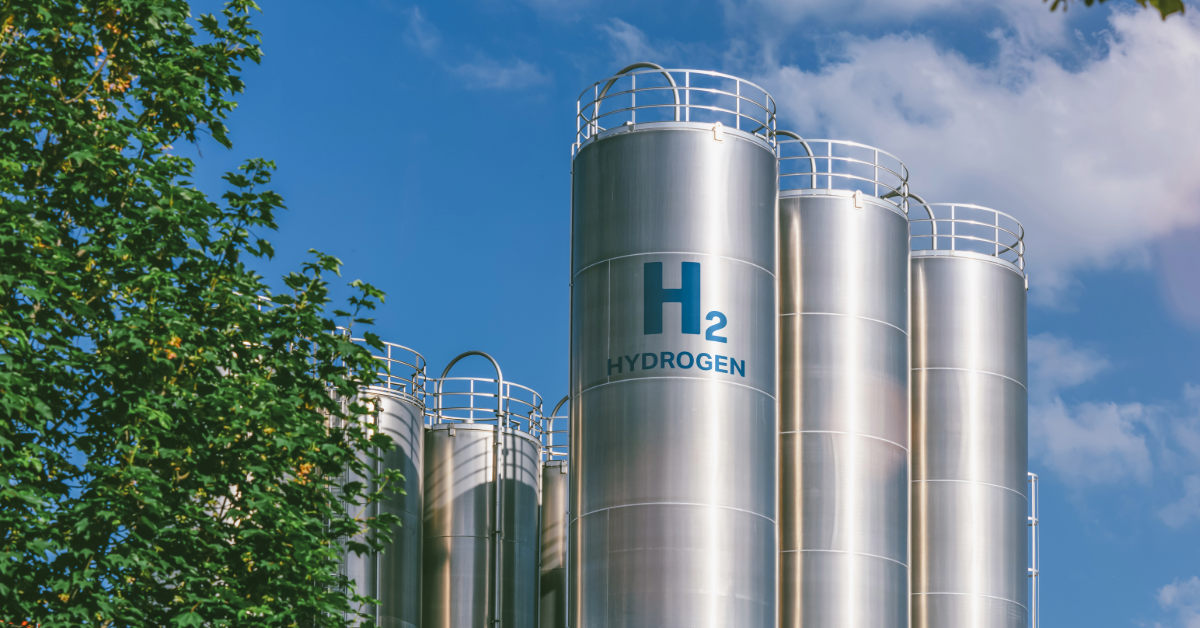1 min read
Embracing the Energy Transition with PLEXOS Co-optimized Datasets
The significance of co-optimized energy solutions has never been more critical, as we are reaching a time where energy efficiency and sustainability...
5 min read
Evgeniia Kirillova & Suraj Singh : Jul 11, 2024 11:43:28 AM

This blog is part of a series on our co-optimization models in PLEXOS, following our discussion on Embracing the Energy Transition with PLEXOS Co-optimized Datasets. In our previous article, we explored a comprehensive co-optimization model that integrated electricity, natural gas and hydrogen markets, highlighting the complexities and benefits of such an inclusive approach. This instalment narrows the focus to the co-optimization of hydrogen and electricity markets, examining the interplay between these two energy sources, the potential for increased efficiency, and the strategic benefits for grid stability and sustainability. The final article in this series will focus on the co-optimization of natural gas and hydrogen markets, highlighting the synergies and challenges involved and providing insights into how these models can support a more resilient and adaptable energy infrastructure.
Integration of Energy Sources for a Sustainable Future
Integrating different energy sources into a single energy system is crucial for a sustainable energy future. As the world shifts towards cleaner energy solutions, developing co-optimization models that strategically incorporate both electricity and hydrogen into the energy landscape becomes increasingly important.
Importance of Co-optimization Models
Co-optimization models and solutions are essential for integrating diverse energy sources, optimizing resource use, and promoting sustainability in the energy sector. These models provide a comprehensive view of the energy landscape, increasing flexibility to adapt to changes. They maximize the potential of each resource while promoting stability, efficiency, and sustainability in both physical energy systems and energy markets.
Benefits of Optimizing Electricity and Hydrogen Coexistence
By optimizing the coexistence of electricity and hydrogen in energy models, PLEXOS facilitates a smoother transition to a greener future. This approach demonstrates the impact of analyzing both discrete energy systems and the broader, unified energy system.

Source: Energy Exemplar
Components of Co-optimization
The newly launched PLEXOS European Electricity and Hydrogen Co-optimized Dataset brings together key elements of data and analysis to provide a comprehensive, modeled view of the energy landscape. This dataset seamlessly combines insights from the PLEXOS European Electricity Dataset and the European Hydrogen Dataset, leveraging best practices and learnings from Energy Exemplar’s experience and work with various clients. PLEXOS is an advanced energy market simulation and optimization software that helps planners and analysts make informed decisions about complex energy systems.
By combining this information and insights, it is possible to build and execute a detailed analysis of each European electricity bidding market. This includes considering current and future generation capacity across various energy sources such as renewables, oil, natural gas, and coal. The dataset also provides up-to-date information on the growing European hydrogen market, encompassing diverse supply sources such as blue hydrogen from steam methane reforming (SMR), green hydrogen from power-to-x (P2X) electrolyser units, pipeline imports and potential liquid hydrogen volumes.
This integrated information is synchronized with supply volumes and demand at national nodes. Hydrogen capacity offers flexibility for price adjustments during peak demand periods, highlighting the interconnected nature of the modeled components.
Establishing Effective Power and Hydrogen Connections
The core of the PLEXOS model design establishes a bi-directional relationship between Hydrogen Hubs and Hydrogen Combined Cycle Gas Turbines (CCGTs) in the electricity dataset. This includes:
We have enhanced the hydrogen part of our co-optimized dataset. To provide a more accurate reflection of electricity prices across borders, we now use dynamic hourly electricity prices from the electricity hubs in each European country to supply electrolysers, instead of fixed electricity prices.
These features are already implemented in PLEXOS, offering users a sophisticated and realistic model of the hydrogen-electricity interaction.
Like the entire PLEXOS platform, Energy Exemplar datasets are regularly improved upon to provide the most accurate and useful insights across a wide range of contexts and use cases.
Optimizing Energy Integration for Better Decision-Making
PLEXOS provides the flexibility to experiment with unlimited scenarios, empowering you to adapt and innovate to keep pace in a dynamic industry. Incorporating energy and hydrogen interdependency and connections scenarios allows users to assess the impact of co-optimization strategies, enabling analysts to reveal true insights and decision-makers to make informed, data driven decisions.

Source: Energy Exemplar
Ensuring Smooth Price and Volume Transfers
PLEXOS ensures smooth price and volume transfers between Hydrogen Hubs and Hydrogen CCGTs via a PLEXOS membership. This allows the transfer of dynamic hydrogen prices to modelled hydrogen CCGTs based on the supply/demand balance of the hydrogen market.
The integration of diverse hydrogen production methods, such as steam methane reformation (SMR) and liquid hydrogen imports, leads to less electricity consumption. This, in turn, contributes to a reduction in time-weighted electricity prices across some regions. The development of co-optimization modelling solutions is crucial for effectively integrating all elements of the energy system, enhancing overall efficiency and stability.
Harmonizing Energy Domains: A Checklist for Success
Developing a co-optimization solution requires an understanding of the differences between energy domains - each governed by its own set of market rules, granularity levels, time scales and volatility risks - and the ability to bridge these differences to ensure seamless creation of scenarios and analysis. The Energy Exemplar team provides the expertise and resources necessary to develop a co-optimized solution tailored to your needs. To ensure accuracy and reliability, PLEXOS co-optimization datasets and models are configured to define and regulate:
Leveraging Hydrogen and Co-optimization for Sustainability: Modelling Results
The maturity of transition energy markets has led to smoother price movements and a more stable energy market. The addition of a fully modeled hydrogen system, including blue and green hydrogen production, has diversified hydrogen production sources and reduced electricity consumption. In addition, there has been a shift towards greater use of natural gas for SMR processes. This has allowed for the diversification of hydrogen production sources and reduced electricity consumption. The integration of blue hydrogen production with CCS (Carbon Capture and Storage) technologies underlines its importance in reducing carbon emissions and promoting sustainable energy practices.
By co-optimizing modelling solutions, PLEXOS plays a key role in strategically integrating all energy fuels, resources and assets to maximize their potential within the energy landscape. These solutions provide a comprehensive approach to model-based techno-economic energy decision making, considering multiple objectives such as cost minimization, emissions reduction and resource optimization.
Explore More on This Topic with These Related Blogs
Europe’s Emerging Hydrogen Marketplace and the PLEXOS Hydrogen Dataset
Modelling the Economic & Environmental Impact of Hydrogen in Europe
Hydrogen Transport Modelling In PLEXOS.
Transform Your Energy Strategy with PLEXOS Co-optimized Datasets
Unlock the full potential of integrated energy markets. The PLEXOS Co-optimized Dataset enables more accurate modeling, better decision-making, and a sustainable approach to energy planning.
Start planning with PLEXOS today
Gain access to the PLEXOS Co-optimized Dataset and see how PLEXOS models the linkages between electricity, gas and hydrogen markets.

1 min read
The significance of co-optimized energy solutions has never been more critical, as we are reaching a time where energy efficiency and sustainability...

1 min read
